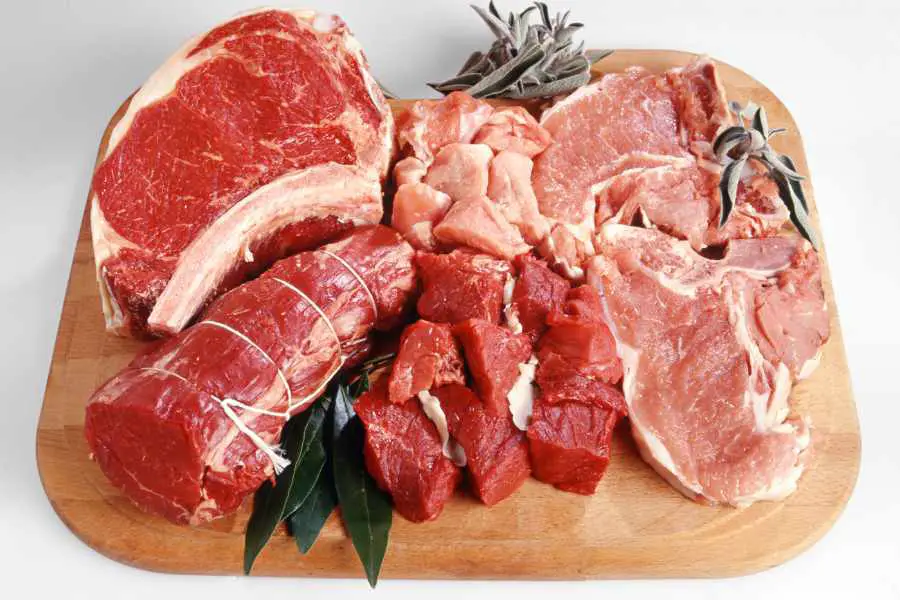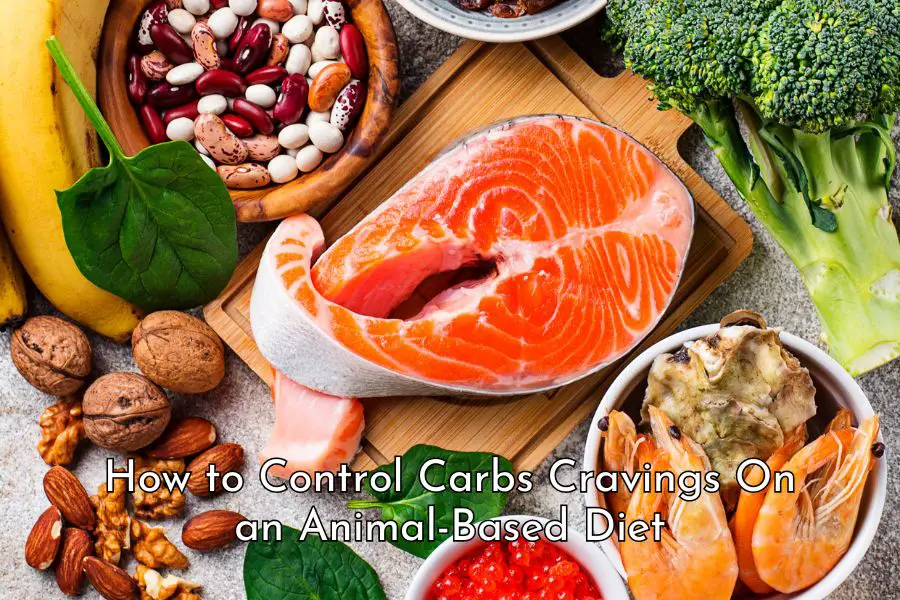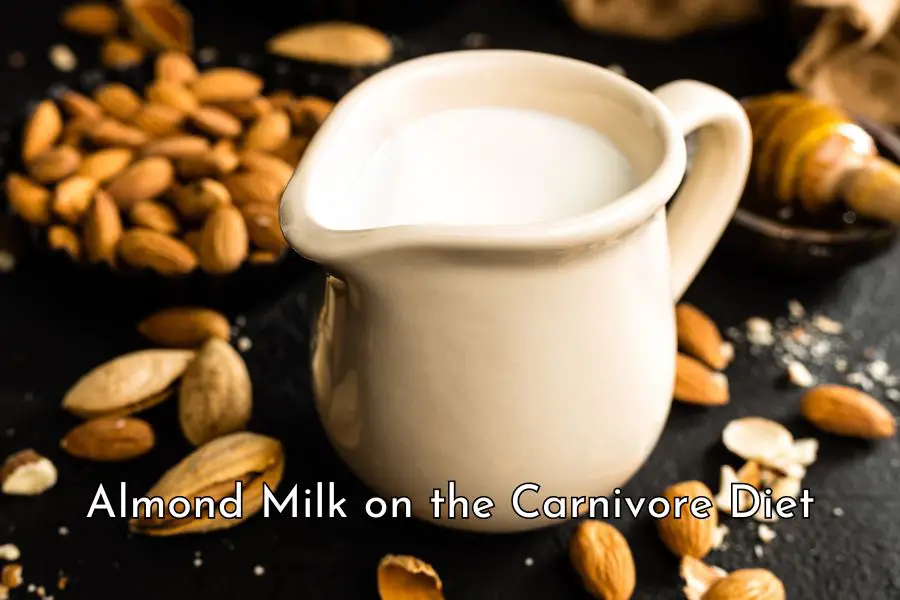The omega-6 to omega-3 ratios of foods on the carnivore diet can vary significantly depending on food types and how they are produced, however, getting the omega-6 to omega-3 ratio right is critical for your health.
In this in-depth article, we will cover the following:
- What omega-6 and omega-3 fatty acids are
- The large discrepancy in the omega-6 to omega-3 ratios in our ancestors’ diet and modern-day diets,
- The omega-6 to omega-3 ratios of animal-based foods, and
- How to optimize your omega 6 to omega 3 ratio on the carnivore diet.
What are omega-6 fatty acids?
Omega-6 fatty acids are a type of polyunsaturated fatty acids that are considered essential for the human body. They cannot be synthesized by our body and must be obtained through our diet.
The term “omega-6” refers to the location of the first double bond in the chemical structure of the fatty acid, which is six carbons away from the end of the molecule. [1]
Omega-6 fatty acids play several important roles in the body, including: [2, 3, 4]
- Acting as structural components of cell membranes
- Supporting brain function and development
- Regulating metabolism
- Maintaining bone health
- Promoting healthy skin and hair
- Regulating the reproductive system
- Modulating inflammation and cellular immunity.
Examples of omega-6 fatty acids include linoleic acid and arachidonic acid, which can be found in a variety of foods such as vegetable oils (such as safflower, soybean, sunflower, corn, sesame oils), nuts and seeds (such as walnuts, flaxseeds, hemp seeds, sunflower seeds, chia seeds), and meats. [5]
While omega-6 fatty acids are important for our health, excessive intake of these fatty acids relative to omega-3 fatty acids has been linked to chronic inflammatory diseases such as nonalcoholic fatty liver disease, cardiovascular disease, obesity, inflammatory bowel disease, rheumatoid arthritis, and Alzheimer’s disease. [6, 7]
Therefore, it’s important to maintain a good ratio of omega-6 to omega-3 fatty acids in our diet and we will look into this subject in more detail later on. [8]
What are omega-3 fatty acids?
Omega-3 fatty acids are a type of polyunsaturated fatty acids that are important for the healthy functioning of the human body but the body cannot produce on its own and must obtain them through diet. [9]
There are several types of omega-3 fatty acids but the majority of scientific research focuses on three types: alpha-linolenic acid (ALA), eicosapentaenoic acid (EPA), and docosahexaenoic acid (DHA). [10]
ALA mainly comes from plant foods (e.g. flaxseeds, walnuts, hempseeds, linseeds, rapeseeds, and chia seeds) while EPA and DHA mainly come from animal sources (e.g. fish, seafood, meat, fat, organ meat, and eggs).
Omega-3 fatty acids play several important roles in the body, including: [11, 12, 13, 14, 15]
- Acting as structural components of cell membranes throughout the human body
- Supporting brain function and development
- Regulating inflammation and blood clotting
- Supporting eye, heart, joint and mental health
- Supporting reproductive health, fetal development, and healthy aging
- Reducing the risk of chronic diseases such as arthritis, cancer, and depression.
Insufficient intake of EPA and DHA (marine omega-3s) has been linked to a number of health problems including ADHD, autism, bipolar disorder, depression, and suicide risks. [16]
The importance of the right omega-6 to omega-3 ratio in our diet
While they are both essential, omega-6 fatty acids are known to promote inflammation whereas omega-3 fatty acids have anti-inflammatory effects. Therefore, getting the omega-6 to omega-3 ratio right in your diet is critical for achieving optimal health. [17, 18, 19]
Our ancestors are believed to have consumed a diet with an omega-6 to omega-3 ratio of around 1:1. This is unsurprising given the fact that their diet consisted of mostly meat from large herbivores. [20, 21, 22]
Herbivores (e.g. cattle, deer, and sheep) often have a specialized digestive system with multiple stomach chambers that allow them to convert polyunsaturated fats into saturated fats. As a result, they have low levels of polyunsaturated fats and also more favorable omega-6 to omega-3 ratios. [23]
However, modern Western diets generally have a much higher omega-6 to omega-3 ratios ranging from 10:1 to 20:1. Such excessive omega-6 fatty acid intake has been linked to a variety of health problems including inflammation, heart disease, obesity, rheumatoid arthritis, Alzheimer’s disease, and cancer. [24, 25, 26, 27]
If you are currently on the carnivore diet and have cut out all plant-based foods including seed oils, your omega-6 fatty acid consumption would have reduced drastically and your overall omega-6 to omega-3 ratio would have improved accordingly.
However, some animal-based foods have more favorable omega-6 to omega-3 ratios than others and to optimize our fatty acid intake, we need to choose the right food groups which we will consider in the following section.
The omega-6 to omega-3 ratio on the carnivore diet
The omega-6 to omega-3 ratios of animal-based foods can vary significantly. However, the ones with the best ratios as well as being the best sources of omega-3 fatty acids appear to be animal brains, seafood, cheese, and ruminant fats.
As can be seen in the table below, animal brains (beef, lamb, and pork) are especially high in omega-3 fatty acids. This is expected given how important omega-3 is for brain function and development. [28]
Seafood like tuna, herring, salmon, and mackerel all have very low omega-6 to omega-3 ratios and are especially rich sources of omega-3 fatty acids. Some seafood has omega-6 to omega-3 ratios close to zero because of their extremely low omega-6 contents.
Ruminant fats also have low omega-6 to omega-3 ratios. For example, beef fat and lamb fat ratios are 1.4 and 2.1 respectively.
However, it is important to note that these ratios can vary significantly from sample to sample depending on how they are raised. Grass-fed beef, for example, will generally have more omega 3 fatty acids and lower omega 6 to omega 3 ratios than grain-fed beef.
While cheese products also have low omega-6 to omega-3 ratios, their omega-3 fatty acid contents are not as high as those in animal brains and seafood.
Pork and poultry are at the other end of the spectrum and have extremely high omega-6 to omega-3 ratios (in the range from 10 to 24).
However, similar to beef, pasture-raised pork and poultry also have a more favorable omega-6 to omega-3 ratio compared to their conventionally raised counterparts. [29, 30]
| Nutrients per 100g | Omega 6:Omega 3 | Omega 3 (mg) | Omega 6 (mg) |
|---|---|---|---|
| Beef brain | 0.0 | 1,225 | 41 |
| Tuna | 0.0 | 1,298 | 53 |
| Lamb’s brain | 0.0 | 620 | 30 |
| Shrimp | 0.1 | 540 | 28 |
| Herring | 0.1 | 1,729 | 130 |
| Mackerel | 0.1 | 2,670 | 219 |
| Wild salmon | 0.1 | 2,018 | 172 |
| Pork brain | 0.1 | 790 | 90 |
| Atlantic salmon | 0.4 | 2,506 | 982 |
| Gouda | 0.7 | 394 | 263 |
| Parmesan | 0.9 | 297 | 272 |
| Lamb’s heart | 1.0 | 230 | 240 |
| Mozzarella | 1.1 | 372 | 393 |
| Lamb’s kidney | 1.1 | 190 | 210 |
| Feta | 1.2 | 265 | 326 |
| Beef fat | 1.4 | 1,070 | 1,490 |
| Cheddar | 1.6 | 365 | 577 |
| Brie | 1.6 | 313 | 513 |
| Camembert | 1.6 | 274 | 450 |
| Tenderloin | 2.0 | 221 | 452 |
| New York Strip | 2.0 | 185 | 379 |
| Lamb fat | 2.1 | 798 | 1,652 |
| Ribeye steak | 2.1 | 240 | 510 |
| Lean lamb | 2.2 | 72 | 155 |
| Sardine | 2.4 | 1,480 | 3,544 |
| Ground lamb | 3.2 | 420 | 1,360 |
| Strip steak | 3.8 | 21 | 80 |
| Chuck steak | 3.8 | 91 | 347 |
| Lean chicken | 4.3 | 40 | 170 |
| Pork liver | 4.4 | 80 | 350 |
| Lamb’s liver | 4.6 | 70 | 320 |
| Lean chicken | 7.5 | 100 | 750 |
| Ground beef (90% lean) | 7.8 | 35 | 273 |
| Ground beef (85% lean) | 8.4 | 42 | 354 |
| Butter | 8.7 | 315 | 2,728 |
| Pork heart | 9.6 | 80 | 770 |
| Pork belly | 10.5 | 480 | 5,029 |
| Duck fat | 12.0 | 1,000 | 11,999 |
| Ground chicken | 13.8 | 96 | 1,327 |
| Chicken breast | 14.5 | 120 | 1,740 |
| Chicken wing | 14.8 | 200 | 2,950 |
| Chicken thigh | 15.0 | 206 | 3,091 |
| Pork kidney | 17.0 | 10 | 170 |
| Chicken fat | 19.5 | 1,000 | 19,503 |
| Bacon | 21.1 | 213 | 4,497 |
| Pork fat | 21.8 | 427 | 9,313 |
| Lean pork | 23.5 | 54 | 1,271 |
| Ground pork | 23.9 | 70 | 1,670 |
Optimizing your omega-6 to omega-3 ratio
If you want to optimize the omega-6 to omega-3 ratio in your diet, based on the above data, you should stay with ruminant fats, animal brains (if you eat organ meat), and wild-caught seafood.
If you make ruminant meat, fat, and organs the core of your diet and add occasional servings of good quality seafood, it won’t be difficult to keep the omega-6 to omega-3 ratio in your diet below 2:1.
If you can’t get good quality seafood, I think it’s better to stay with just ruminant meat, fat, and organs because farmed fish is generally raised in poor conditions, fed an unnatural diet, and injected with all sorts of chemicals. [31, 32, 33]
Although there aren’t a lot of omega-3 fatty acids in ruminant fat (apart from their brains), when you don’t consume a lot of pro-inflammatory omega-6 fatty acids, you don’t need a lot of anti-inflammatory omega-3 fatty acids as well.
If you haven’t tried animal brains before and don’t know how to cook them, please check out our delicious recipes. They are not only a great source of omega-3 fatty acids but also full of other nutrients.
With regard to cheese, although it is a great source of calcium and has a low omega-6 to omega-3 ratio, some people may be sensitive to dairy in general and it can’t be part of their regular diet.
As mentioned above, conventionally raised pork and poultry generally have very high omega-6 to omega-3 ratios due to their high PUFA diets, but if you can get pasture-raised pork and poultry, it is perfectly fine to include them in your diet regularly because they have more favorable fatty acid profiles.
Other posts you might be interested in:
Is Carnivore Diet + Fruit & Honey a Good Idea?
Best Sources of Omega 3 on the Carnivore Diet
How Much Organ Meat Should You Eat on the Carnivore Diet?
Do You Need Supplements on the Carnivore Diet?
What Do Hardcore Carnivores Eat in a Day?
Disclaimer: The information in this post is for reference purposes only and is not intended to constitute or replace professional medical advice. Please consult a qualified medical professional before making any changes to your diet or lifestyle. Please check out our disclaimer for more detail.





